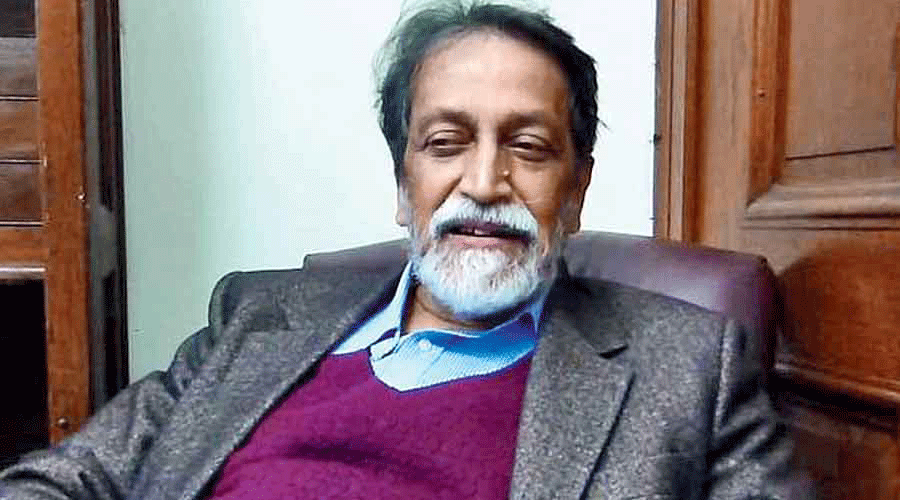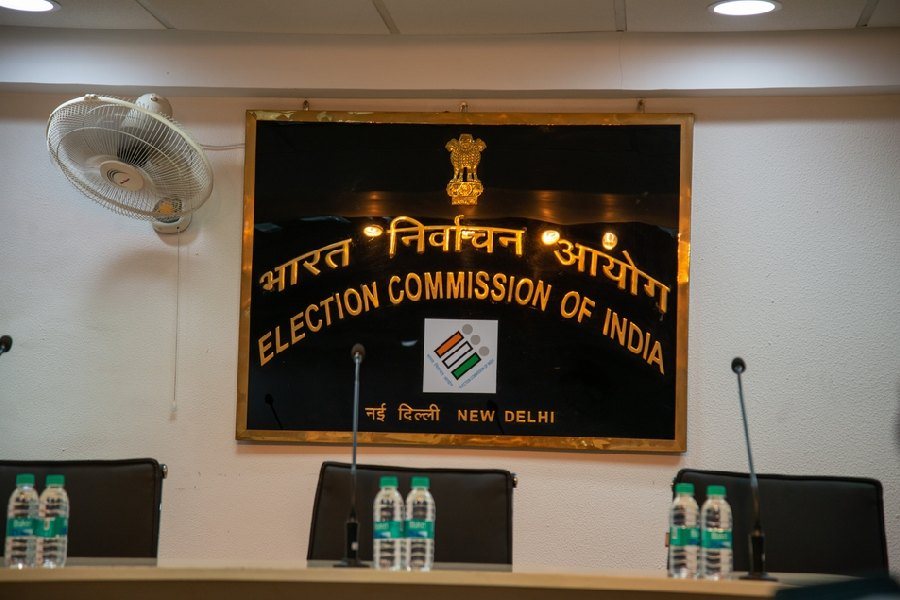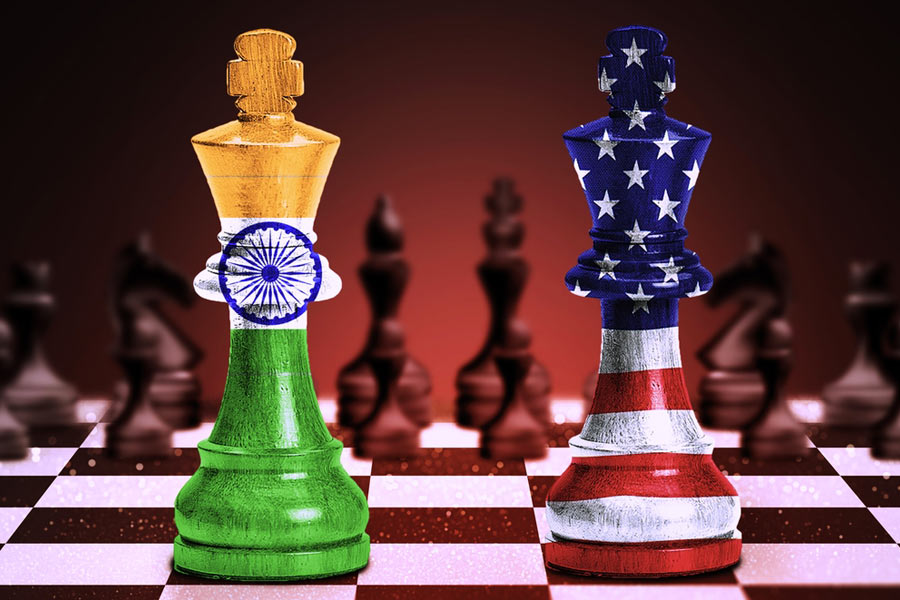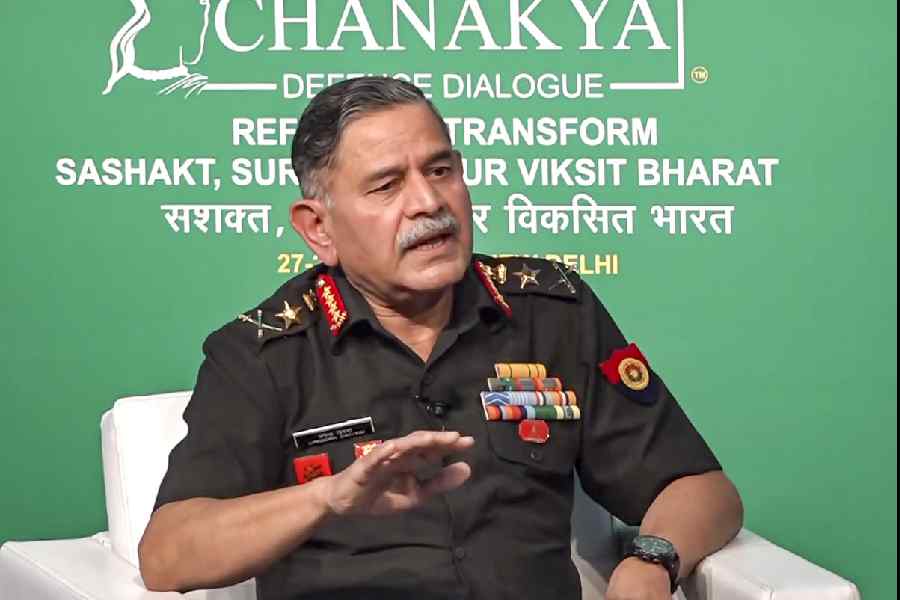The government is reportedly planning a crackdown against “Maoist intellectuals operating front organisations in the cities in the guise of NGOs and civil rights organisations”, months after Prime Minister Narendra Modi called for the eradication of “Naxalism”, whether “the ones with guns or the ones with pens”.
But who are these so-called “Urban Naxals” and why does the government consider them so dangerous? Social scientist PRABHAT PATNAIK explains in this interview with SUBHORANJAN DASGUPTA, professor of human sciences.
Q: The prosecution under Mussolini had attacked the Marxian theorist and activist, Antonio Gramsci, saying “this brain should not be allowed to function for 10 years”. The judge in Modi’s time almost echoed these words while sentencing the paraplegic academic G.N. Saibaba to prison for Maoist links. What message does this comparison or coincidence convey?
Patnaik: One well-known feature of fascism is the targeting of a hapless minority as the “other” and promoting hatred against it; but an equally important feature is that the majority itself is manipulated into also accepting the primacy of a discourse that focuses upon it.
This acceptance requires that people must not think for themselves, which explains fascism’s antipathy towards intellectual activity, in contrast, for instance, to the theory of the Left, summarised in Bertolt Brecht’s famous lines, “Hungry man, reach for the book”.
The fascists’ antipathy to free intellectual activity manifests itself in several ways: burning books (as in 1930s Germany), preventing the creation and dissemination of thought by incarcerating intellectuals (as with Gramsci), and using catchphrases like “Urban Naxals” to discredit intellectuals in the public eye although such a catchphrase makes little intellectual sense and can be, and is being, applied indiscriminately against all dissidents.
The consequence of this drive against intellectual activity — be that of Gramsci or Saibaba — is the destruction of thought. And a society where thought has been destroyed not only vegetates but cannot even survive as an independent entity. It has to live on borrowed ideas, which in today’s world would be necessarily from the western metropolises. The drive against “Urban Naxals”, therefore, paves the way for the country’s intellectual servility.
Q: Can we really label an academic like Saibaba, a social worker like the departed Father Stan Swamy, and a human rights defender like Gautam Navlakha as “Urban Naxals” wedded to criminal violence?
Patnaik: If the government has any credible evidence of culpable wrongdoing against any individual, it should present that evidence in a court where the individual should be tried in a timebound manner. But keeping people in jail for inordinately long periods, as has happened with the Bhima Koregaon arrestees, is unacceptable. They have been kept in jail without trial, for a longer period than any single occasion of Gandhiji’s imprisonment by the colonial government.
Even the important finding by (US computer forensics services firm) Arsenal (Consulting) that letters and data on their (some of the Bhima Koregaon accused) personal computers had been planted has not stirred either the government or the judiciary into taking note of the injustice to those incarcerated. It is obvious that the intent behind incarcerating them for such a long period is both to incapacitate them and to warn other intellectuals of the consequences of expressing any dissent. It is an act of terrorising peaceful intellectual dissenters.
I should make it clear that asking for a revolution is not a crime in this country: even Jaya Prakash Narayan had asked for a “total revolution”. What is culpable under the law is participating in, or aiding and abetting in some specific sense, an armed uprising against the constitutional order.
The Prime Minister is not correct in talking of people threatening the country with “guns or pens”. Unless those using pens are explicitly asking for an armed overthrow of the constitutional order (and arguably not even then, since “asking for” is not the same as “aiding and abetting”, as a US Supreme Court ruling with regard to the American Communist Party had made clear), they cannot be treated on a par with those using guns.
If the bogey of “Urban Naxals” raised by the government were true, then the Maoist movement today would have been far stronger than it is. The objective clearly is to terrorise intellectuals.
Q: Intense personal reactions have greeted the onslaught against “Urban Naxals”. The historian Ramachandra Guha came out on the streets to protest. The late dramatist Girish Karnad had stood at a crossing and told the police, “Come, arrest me, I am an Urban Naxal.” Do you endorse these agitated reactions, voiced in public?
Patnaik: These are all legitimate reactions against the government’s attempt to terrorise intellectuals into eschewing dissidence. Dissidence is absolutely essential to a democracy. These reactions were part of the struggle to preserve democracy against the government’s attempt to enfeeble it. I therefore endorse them.
Q: Does the Modi regime equate “Urban Naxals” with the lawful and legitimate practice of dissent in a democratic set-up? Why is it using draconian measures like the anti-terror law UAPA to corner and arrest them? Does it want to divert our attention from the real issues?
Patnaik: Absolutely. The terrorisation of intellectuals is not just meant to silence them and to force other intellectuals into eschewing dissidence, it is also meant to create an impression among the public that there are all kinds of conspiracies afoot, that the country is besieged, and so on.
Such an atmosphere of fear naturally pushes this socalled “threat to the nation” to the forefront, to the exclusion of other pressing problems of the people such as inflation, unemployment and the growing absolute poverty that has characterised the entire neo-liberal period but has become even more acute in the Modi years, as well as the burgeoning income and wealth inequalities.
What is more, now even talking about these problems will bring the charge from the government that the security threat to the country from within is being played down, and that the people doing so must be in cahoots with the Maoists and hence constitute “Urban Naxals”. Branding people “Urban Naxals” thus becomes a convenient means of preventing any discussion of the pressing problems of the masses.
The government’s mindset is evident from the way the solicitor-general wanted Navlakha’s medical bail cancelled in the Supreme Court because he was scheduled to stay in an accommodation attached to a CPM office in suburban Mumbai. In the SG’s mind, the distinction between the CPM and the Maoists, between political workers and social activists, between human rights defenders and “anti-national” elements, just does not exist. It is one portmanteau concept of “those against us”, and all of them are “Urban Naxals” and hence ipso facto against the country. This “l’etat, c’estmoi” (I myself am the nation) attitude underlies the concept of the “Urban Naxal” and is dangerously anti-democratic.
Q: Does the comparison with Mussolini’s days suggest that we too are headed towards a fascist regime where no dissent of any kind will be tolerated and where protesters who wield their pens will be incarcerated?
Patnaik: We certainly are proceeding in the direction you suggest, except that I would call it a “neo-fascist” regime in order to stress the distinction with old fascism. While all the manifestations of old fascism, such as the use of coercion against opponents, the “othering” of a hapless minority group, the manipulation of the majority through propaganda, the combination of State terror with street-level intimidation by fascist thugs, and above all, a close nexus of the regime with monopoly capital in general, and with a favoured group within it in particular, are there even today, there is one major difference.
The current fascist regimes function within a framework of hegemony by globalised finance capital, because of which they are incapable even of bringing about the improvement that earlier fascist regimes had done to the material living conditions of the people. Japan had been the first country to recover from the Great Depression and Germany too had recovered in 1933 when Hitler came to power. Both countries had used government borrowing to finance rearmament programmes that had overcome the mass unemployment engendered by the Depression.
But today’s fascist regimes cannot even provide this temporary palliative, since globalised finance is opposed to both government borrowing (fiscal deficit) beyond a point and to taxing the rich, which are the only two ways of financing larger public expenditure to reflate the economy.
Contemporary fascist regimes, in short, represent an alliance between neo-liberalism (which means subjecting the economy to the hegemony of globalised finance capital with which the domestic corporate-financial oligarchy is integrated) and neo-fascism. It is this alliance that underscores their sui generis character.










